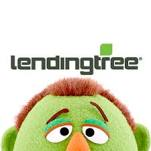Fred Schwed Jr. wrote a book titled “Where Are the Customer’s Yachts?”, copyright 1940. Mr. Schwed Jr. was a professional trader who got out of the market after losing a bundle in the 1929 stock market crash.
In the introduction, he talks about the buttonwood tree on Wall Street where buyers and sellers used to meet. That meeting spot fulfilled all the necessary functions of a market place. A man could go there and do his financial business. But soon, the brokers moved in. And the brokers began adding the business of predicting what the market would do in the future. Mr. Schwed Jr. states the next thing that happened was that the prophecy business almost swamped and ruined the brokerage business.
“The broker influences the customer with his knowledge of the future, but only after he has convinced himself.” Aww, how true!
Interestingly, Mr. Schwed Jr. quoted a Mr. Andrew Mellon (melon head?) who was heard to murmur something to the effect that “gentlemen prefer bonds” even during the late twenties when Wall Streeters knew the market was too high.
Mr. Schwed Jr. recounts the “scattering of bears” who would eventually bow to the force which finally seemed cosmic, switching to being bullish at a later period in the era. The remainder who were still short covered too soon. Then, as prices fell ever lower, the shorts took their profits and bought stocks. If they bought on margin, they went to “the Cleaners”. “The Cleaners” was not one of those exclusive clubs. By 1932, everybody who had ever tried speculation had been admitted to membership.
In the chapter Wall Street Semantics, when asked “What is the market doing?”, the answering phrases are-“It is going up” or “It is going down.” When the stock market is “going up”, it is not the same as an elevator. There is no indication that it will continue to go up. The stock market is not a physical thing, yet we find ourselves unconsciously thinking that it is.
Comments »








